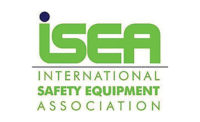History
Originally part of a government standard that also included respiratory and head protection, the standard first appeared under the Z87.1 designation in 1968, and has been revised five times since then in response to advances in technology, as well as the changing workplace environment.
Scope
This standard sets forth criteria related to the general requirements, testing, permanent marking, selection, care, and use of protectors to minimize the occurrence and severity or prevention of injuries from such hazards as impact, non- ionizing radiation and liquid splash exposures in occupational and educational environments including, but not limited to, machinery operations, material welding and cutting, chemical handling, and assembly operations. Certain hazardous exposures are not covered in this standard. These include, but are not limited to: bloodborne patho-gens, X-rays, high-energy particulate radiation, microwaves, radio-frequency radiation, lasers, masers, and sports and recreation.
Why this standard is important
Since the 2010 revision was a dramatic shift away from product configuration requirements and toward a hazard-based structure, much of the revised language in ANSI/ISEA Z87.1-2015 reflects the effort to fine-tune this approach. Streamlined language for resolution testing provides clarity to test methods to ensure they can be accurately executed, and updated test patterns to complement the language. These patterns can be downloaded from ISEA’s website at www.safetyequipment.org.
Key Definitions
Faceshield:.A protector intended to shield the wearer's face, or portions thereof from certain hazards, as indicated by the faceshield’s markings.
Filter lens: A lens that attenuates specific wave-lengths of ultraviolet, visible, and/or infrared ra-diation.
Goggle: A protector intended to tightly fit the face surrounding the eyes in order to shield the eyes from certain hazards, as indicated by the goggle’s markings.
Plano lens: A lens that does not incorporate a corrective prescription; this lens is not necessarily flat.
Prescription lens (Rx): A lens manufactured to the wearer's individual corrective prescription.
Sideshield: A component of a spectacle that provides lateral protection.
Spectacle: A protector intended to shield the wearer's eyes from certain hazards, as indicated by the spectacle’s marking.
Welding goggle: A goggle intended to provide optical radiation protection for limited welding applications.
Welding faceshield: A faceshield intended to provide optical radiation protection for specific welding applications.
Welding filter lens: A lens specified for use for welding or brazing.
Welding helmet: A device intended to provide protection specifically to the eyes and face against welding-related optical radiation and weld spatter.
What employers should do
Eye and face protection shall be required where there is a reasonable probability of injury that can be prevented by such equipment. Employees and students shall use such protectors.
Employees and students shall make a visual in-spection of their protector prior to each use. Pro-tectors which exhibit broken parts, distortion, or excessive scratches on the lens, are unsuitable for use and shall not be worn. Eye and face protectors that have been subject to an impact shall not be used and shall be discarded and replaced.
Protectors shall be maintained in a usable condi-tion in accordance with the manufacturer’s in-structions. Reasonable care shall be taken during the use and storage of protectors so that they are not subject to unnecessary abuse.
When one protector is being used by more than one person, it is recommended that it be cleaned and disinfected prior to use by another person, following the manufacturer’s instructions.
Employers and educational authorities shall train employees and students in the proper use, appli-cation, inspection, maintenance, storage, fitting and limitations of eye and face protectors.
General requirements
Required for all protectors: Tests for:
- Refractive Power, Astigmatism, Prism and Prism • Imbalance (Rx)
- Refractive Power, Astigmatism, Prism and Prism • Imbalance (magnifiers)
- Minimum Coverage Area
- Optical Quality
- Transmittance
- Haze
- Refractive Power, Astigmatism, and Resolving
- Power (plano and reader)
- Prismatic Power (plano and reader)
- Drop Ball
- Ignition
- Corrosion Resistance
- Light Tightness
Testing required only when claims of compliance are made:
- Lateral protection
- High-Mass Impact (plano, Rx, readers, magnifiers, Rx lens carriers)
- High-Velocity Impact (plano, Rx, readers, magnifiers)
- High-Velocity Impact (Rx lens carriers)
- Penetration
- Prescription Lenses Material
- Switching Index
- Angular Dependence of Luminous Transmittance Test for Automatic Welding Filter Lenses
- Droplet and Splash
- Dust
- Fine Dust Particle


